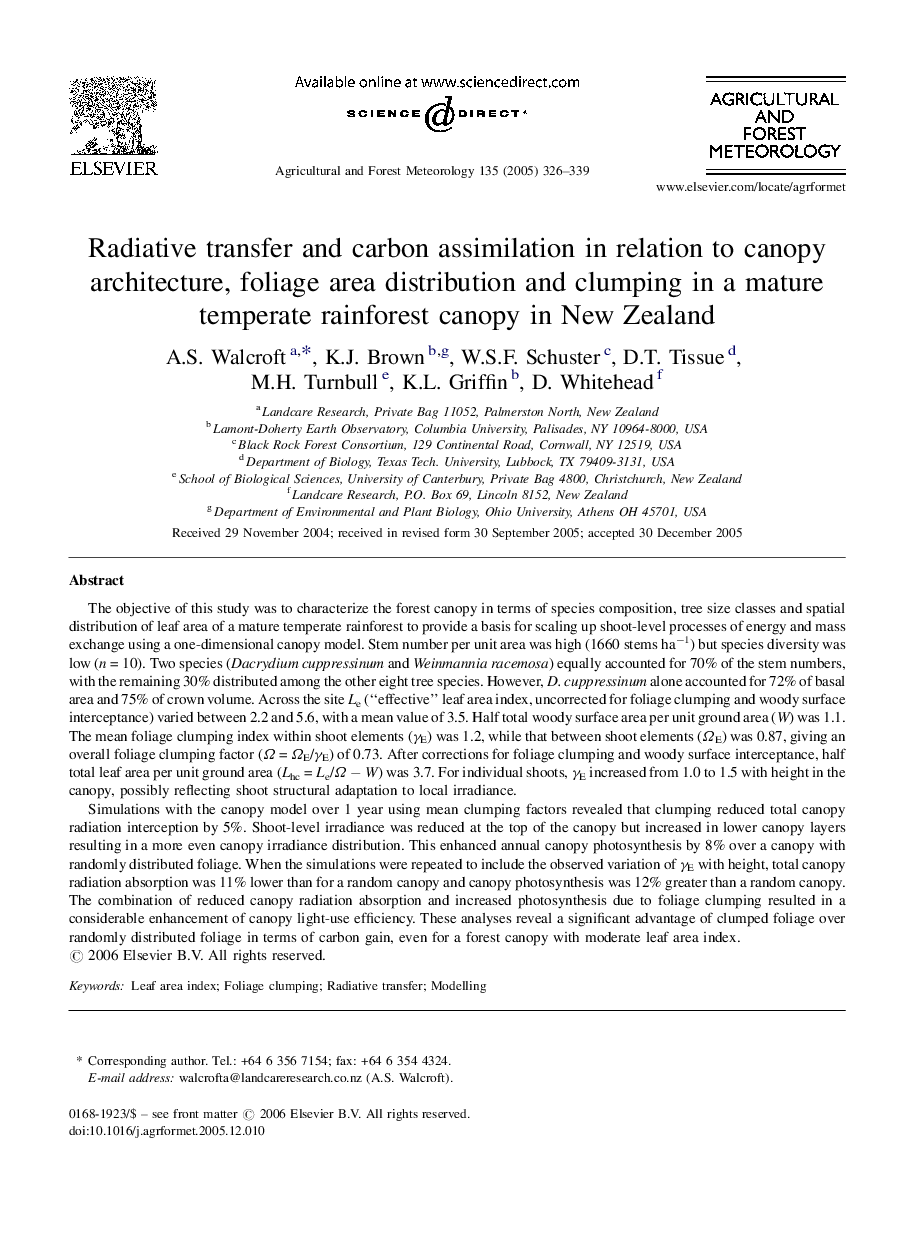| Article ID | Journal | Published Year | Pages | File Type |
|---|---|---|---|---|
| 9619398 | Agricultural and Forest Meteorology | 2005 | 14 Pages |
Abstract
Simulations with the canopy model over 1 year using mean clumping factors revealed that clumping reduced total canopy radiation interception by 5%. Shoot-level irradiance was reduced at the top of the canopy but increased in lower canopy layers resulting in a more even canopy irradiance distribution. This enhanced annual canopy photosynthesis by 8% over a canopy with randomly distributed foliage. When the simulations were repeated to include the observed variation of γE with height, total canopy radiation absorption was 11% lower than for a random canopy and canopy photosynthesis was 12% greater than a random canopy. The combination of reduced canopy radiation absorption and increased photosynthesis due to foliage clumping resulted in a considerable enhancement of canopy light-use efficiency. These analyses reveal a significant advantage of clumped foliage over randomly distributed foliage in terms of carbon gain, even for a forest canopy with moderate leaf area index.
Related Topics
Physical Sciences and Engineering
Earth and Planetary Sciences
Atmospheric Science
Authors
A.S. Walcroft, K.J. Brown, W.S.F. Schuster, D.T. Tissue, M.H. Turnbull, K.L. Griffin, D. Whitehead,
